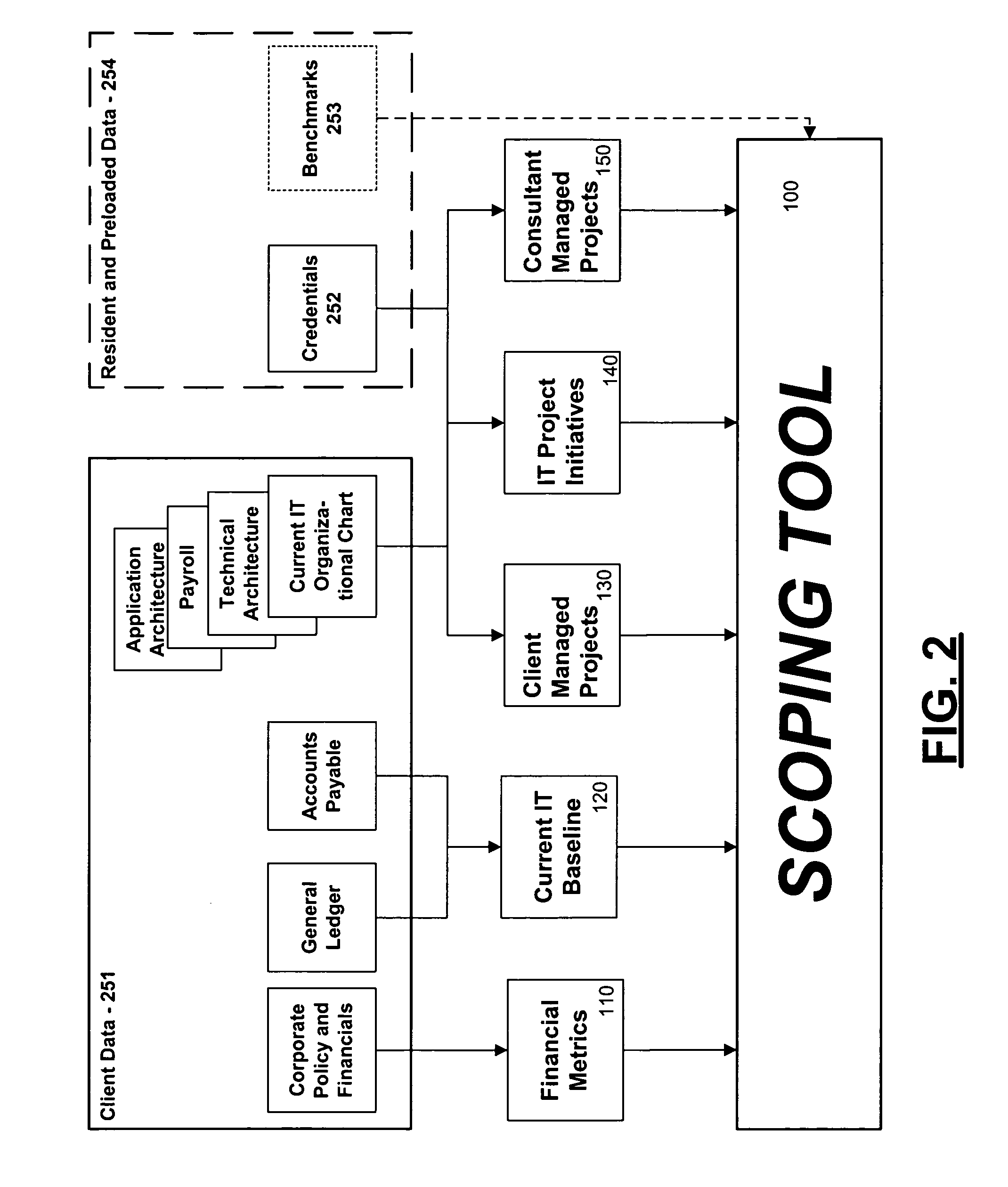Information technology transformation assessment tools
a technology of information technology and assessment tools, applied in the field of assessment tools, can solve the problems of escalating the cost base, low return on investment of capital spent on it projects, excessive non-discretionary spending, etc., and achieve the effect of improving the efficiency and accuracy of assessing needs, saving time, and improving consistency
- Summary
- Abstract
- Description
- Claims
- Application Information
AI Technical Summary
Benefits of technology
Problems solved by technology
Method used
Image
Examples
Embodiment Construction
[0039] An example of a first assessment tool according to the invention, scoping tool 100, which embodiments of the present invention may advantageously employ, is conceptually depicted in the schematic diagram of FIG. 1. Scoping tool 100 comprises groups of interrelated and interdependent computing processes that employ formulas and calculations to interpret and manipulate various input data regarding a target organization or business (i.e., an organization of businesses for which IT transformation is desired) in light of previous IT transformations and associated accumulated credentials data to produce various diagnostic data and graphical outputs. These scoping tool outputs can then be used by a user, such as consulting firm, or other specialist organization to scope an IT department of the target business to assess the expected outcome of the components of a potential IT transformation that is under consideration. Scoping tool 100 is preferably automated by routines operating on...
PUM
 Login to View More
Login to View More Abstract
Description
Claims
Application Information
 Login to View More
Login to View More - R&D
- Intellectual Property
- Life Sciences
- Materials
- Tech Scout
- Unparalleled Data Quality
- Higher Quality Content
- 60% Fewer Hallucinations
Browse by: Latest US Patents, China's latest patents, Technical Efficacy Thesaurus, Application Domain, Technology Topic, Popular Technical Reports.
© 2025 PatSnap. All rights reserved.Legal|Privacy policy|Modern Slavery Act Transparency Statement|Sitemap|About US| Contact US: help@patsnap.com



